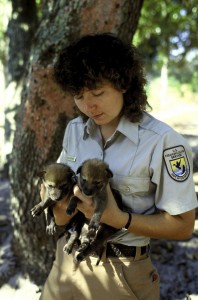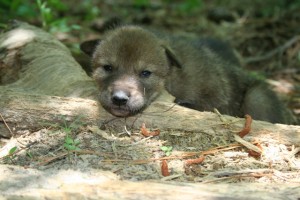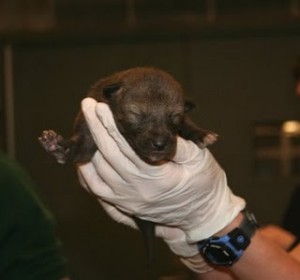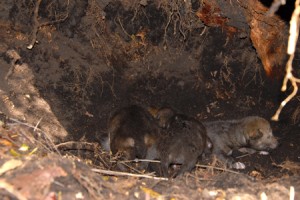Fostering is important because it not only increases the wild population, but it also helps to keep the genetic diversity as high as possible. If you remember from a previous post, genetic diversity is a constant battle when managing the red wolf breeding program.
There are many variables that have to fall neatly into place for a successful foster to occur. To start, red wolf field biologists must be able to follow the movements and actions of a wild, radio-collared female wolf and try to determine if she is pregnant. Now maybe that doesn’t sound too difficult, but read the post I wrote a while back on red wolf field biologists and you may gain a new appreciation for what a large feat this is.

Similarly, captive facilities are monitoring their own wolves and are assessing whether females are pregnant and when they think births will occur. Again, this may sound fairly easy, but it’s not! It requires diligence in observing breeding pairs and noticing behavioral changes that may indicate that a female wolf is pregnant. (I.e nesting behaviors, pulling out belly hair to prepare for suckling, etc).
So, the platform is now set for, well, maybe, a possible foster. If a wild wolf has a litter around the same time as a captive wolf, the plan now becomes a possibility. The wolf in the wild also has to have a small litter, and the captive wolf has to have a large enough litter that the parents are not left “pupless”. Communication and transportation arrangements also need to be ideal.

There has been amazing success with this technique when everything actually falls into place! The wild mother either doesn’t seem to realize, or doesn’t seem to care, that there is now an extra unrelated pup in her litter. She raises the foster pup as if it were her own and the new pup becomes an important addition to the wild population!
With red wolf births starting in as little as a month from now, there could be a foster in the near future. We will be getting in touch with Will Waddell, the RWSSP coordinator, periodically to get updates on any fosters that take place this year. If there is, I will make sure to post about it. In the mean time, keep your fingers crossed for our two red wolves, who are a potential breeding pair. We haven’t noticed any mating so far, but just because we don’t witness it doesn’t mean it hasn’t happened. We will find out in about a month if we have pups!




[…] Source: lifeandscience.org […]